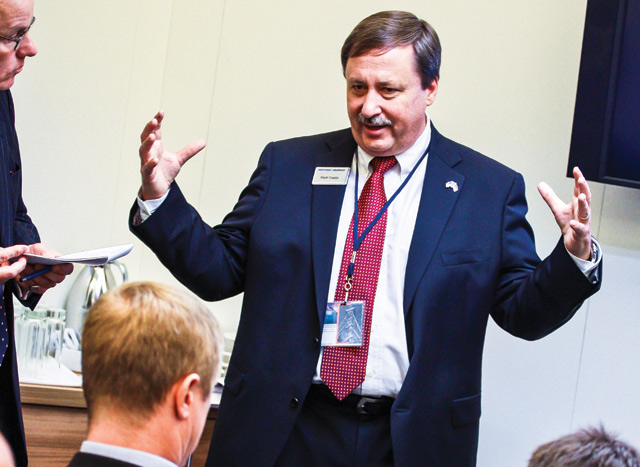It took a long time to take off, but NATO's Alliance Ground Surveillance (AGS) programme has made good progress since the signature of a roughly £1.7 billion ($2.7 billion) contract in May.
The launch was particularly welcome for Northrop Grumman's NATO AGS programme director Matt Copija, who first began working towards the deal in 1996.
 |
|---|
Copyright: BillyPix |
"It was a long fight," he says of the initiative to provide an Alliance-owned fleet of five Northrop RQ-4 Global Hawk unmanned air vehicles and associated equipment, all due to be operational by 2017.
Speaking at ILA, Copija confirmed a target date of September 2015 to fly the first AGS system aircraft, with deliveries of the high-altitude, long-endurance fleet completed in 2016.
The Block 40 Global Hawks will carry a Northrop/Raytheon MP-RTIP ground surveillance radar being developed for the US Air Force. The aircraft and associated infrastructure will be based at NAS Sigonella in Sicily, with initial operating capability to be declared in 2016.
"We started work on 1 June, with a 60-month schedule to when we deliver our final piece of equipment," Copija says. "In 60 months, NATO will be able to begin leveraging missions."
Northrop's key partners on the AGS programme are EADS and Selex, with the pair responsible for managing the involvement of companies from 10 of the programme's 13 signatory nations on its behalf.
Funds to support the programme will come from 26 of NATO's 28 member states, with two - France and the UK - having indicated a desire to make a contribution in kind to the AGS capability using nationally owned assets.
Denmark is in talks with NATO over a possible return to full programme membership, Copija adds, noting that increasing the number of participants could add a sixth aircraft to the programme, removed after Canada withdrew from the initiative.
Source: Flight Daily News























